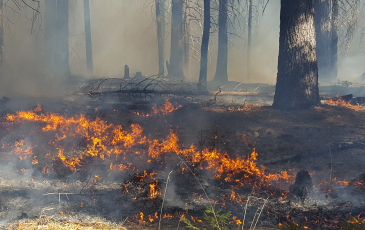Let It Burn: The Forest Service Wants to Stop Putting Out Some Fires
California’s fire season hasn’t turned out to be as bad as some feared this year. Stephens says today there’s actually a fire deficit.
Sierra Nevada forests are adapted to low-intensity fires that clear the underbrush and prevent trees from getting too dense. After a century of fire suppression, many forests are overgrown, which can make catastrophic fires worse.
U.S. federal fire and forest policy: emphasizing resilience in dry forests
New research from Scott Stephens, Brandon Collins, Eric Biber, and Peter Fule
Wildfire management vs. fire suppression benefits forest and watershed
After a three-year, on-the-ground assessment of the park’s Illilouette Creek basin, UC Berkeley researchers concluded that a strategy dating to 1973 of managing wildfires with minimal suppression and almost no preemptive, so-called prescribed burns has created a landscape more resistant to catastrophic fire, with more diverse vegetation and forest structure and increased water storage, mostly in the form of meadows in areas cleared by fires.
Managed Wildfire Effects on Forest Resilience and Water in the Sierra Nevada
Managed wildfire appears to increase landscape heterogeneity, and likely improves resilience to disturbances, such as fire and drought, although more detailed analysis of fire effects on basin-scale hydrology is needed.
Forest Biomass in the proposed FY2017 Interior Appropriations Bill
William Stewart, PhD Forestry Specialist, Co-Director of the Center for Forestry & Center for Fire Research and Outreach, and other eight other scientists came together to write this commentary for the initiative that supported the inclusion of forest biomass issues in the proposed FY2017 Interior Appropriations bill.
Fire Mountains
On a bone-dry day in August 2013, Kate Wilkin and her fellow fire science students ventured into the dense Stanislaus National Forest in the western Sierra Nevada. They scrambled over roots and fallen trees to identify pines and firs, measure their sizes, and gauge their fuel potential for wildfires.
California Today: Fighting Fire With Fire
If you think it’s been a fiery year, we’re only just getting started.
Since January, the number of fires threatening areas guarded by California’s Department of Forestry and Fire Protection has jumped roughly 23 percent compared to the five-year average. Their size has grown, too, by nearly 90 percent, according to data released by the agency.


